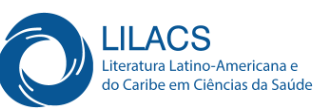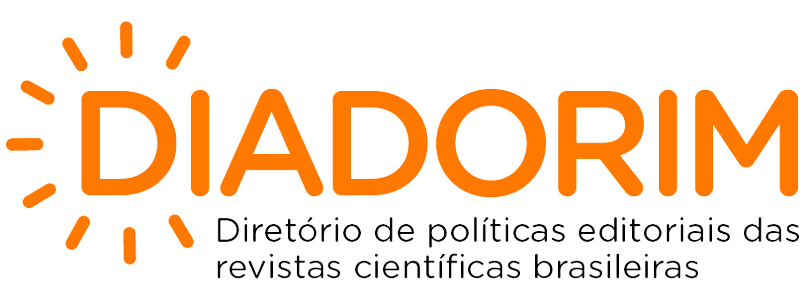Validation pilot study of the identifying signs of dyslexia test (TISD)
DOI:
https://doi.org/10.5433/2236-6407.2013v4n2p217Keywords:
neuropsychology, psychological assessment, dyslexia, learning disabilitiesAbstract
This study aimed to obtain the first evidence of validity to the Test Identification Signs of Dyslexia (TISD). We investigated two groups of children, one without learning difficulties (n=9) and other with learning difficulties (n=11); the second group was selected due to possible risk of learning disabilities. Two instruments were used for data collection Academic Performance Test (TDE) and TISD. The results showed differences between groups in the scores of the subtests of reading, writing, calculation, phonological awareness, working memory and total, with better performance in the group without learning difficulties. Significant and negatives correlations between TDE and TISD was found. It was found that the TISD proved capable of differentiating the groups, as well as correlations obtained with another instrument that assessed similar constructs, the aim of this study was reached.Downloads
References
Alves, R. J. R. (2011). Teste de identificação de sinais de Dislexia (TISD). Monografia de Conclusão de Curso de Especialização, Universidade Estadual de Campinas, São Paulo
Alves, R. J. R., Lima, R. F., Salgado-Azoni, C. A., Carvalho, M. C., & Ciasca, S. M. (no prelo). Teste de Identificação de Sinais de Dislexia (TISD): Processos de construção. Estudos de Psicologia (PUC-Campinas).
American Psychiatric Association (APA) (2002). Manual diagnóstico e estatístico de transtornos mentais (DSM-IV-TR). Porto Alegre: Artes Médicas.
American Psychological Association (APA) (1999). Standards for educational and psychological testing. Washington, DC.
Anastasi, A., & Urbina S. (2000). Testagem psicológica. Porto Alegre: Artes Médicas. Bergmann, J., & Wimmer, H. (2008). A dual-route perspective on poor reading in a regular orthography: Evidence from phonological and orthographic lexical decisions. Cognitive Neuropsychology, 25(5), 653-676.
Caldonazzo, A., Salgado, C. A., Capellini, A. S., & Ciasca, S. M. (2006). Desempenho na resolução de problemas envolvendo o conceito aditivo em sujeitos com Dislexia do Desenvolvimento. Revista Psicopedagogia, 23(71), 116-123.
Capellini, S. A., Coppede, A. C., & Valle, T. R. (2010). Função motora fina de escolares com dislexia, distúrbio e dificuldades de aprendizagem. Pró-fono Revista de Atualização Científica, 22(3), 201-208.
Capellini, S. A., Sampaio, M. N., Matsuzawa, M. T., Oliveira, A. M., Fadini, C. C., & Martins, M. A. (2009). Protocolo de identificação precoce dos problemas de leitura: estudo preliminar com escolares de 1º ano escolar. Psicopedagogia, 26(81), 367-375.
Capovilla, A. G. S., Smythe, I., Capovilla, F. C., & Everatt, J. (2001). Adaptação brasileira do International Dyslexia Test: Perfil cognitivo de crianças com escrita pobre. Temas sobre Desenvolvimento, 10(57), 30-37.
Carvalhais, L. S. A. (2010). Construção de instrumentos de avaliação da dislexia. Tese de Doutorado, Universidade de Aveiro: Aveiro.
Carvalho, F. B., Crenitte, P. A. P., & Ciasca, S. M. (2007). Distúrbios de aprendizagem na visão do professor. Psicopedagogia, 24(75), 229-239.
Conboy, J. E. (2003). Algumas medidas típicas univariadas de magnitude do efeito. Análise Psicológica, 21(2), 145-158.
Coppede, A. C., Okuda, P. M. M., & Capellini, S. A. (2012). Desempenho de escolares com dificuldades de aprendizagem em função motora fina e escrita. Revista Brasileira de Crescimento e Desenvolvimento Humano, 22(3), 297-306.
Cox, E. A. (2002). An evaluation of the psychometric properties of the test of dyslexia e dysgraphia. Tese de Doutorado. University of Tennessee: EUA.
Dancey, C., & Reidy, J. (2006). Estatística sem matemática para Psicologia: Usando SPSS para Windows. Porto Alegre: Artmed.
Deuschle, V. P., & Cechella, C. (2009). O déficit em consciência fonológica e sua relação com a dislexia: Diagnóstico e intervenção. Revista CEFAC, 11(Supl 2), 194-200.
Eden, G. F., & Zeffiro, T. A. (1998). Neural systems affected in developmental dyslexia revealed by functional neuroimaging. Neuron, 21(2), 279-282.
Facoetti, A., Trussardi, A. N., Ruffino, M., Lorusso, M.L., Cattaneo, C., Galli, R., Molteni, M., & Zorzi, M. (2010). Multisensory spatial attention deficits are predictive of phonological decoding skills in developmental dyslexia. Journal of Cognitive Neuroscience, 22(5), 1011-1025.
Fletcher, J. M., Lyons, G. R., Fuchs, L. S., & Barnes, M. A. (2009). Transtornos de aprendizagem: Da identificação à intervenção. Porto Alegre: Artmed.
Fuchs, L. S., & Fuchs, D. (1998). Treatment validity: A simplifying concept for reconceptualizing the identification of learning disabilities. Learning Disabilities Research and Practice, 4, 204-219.
Germano, G. D., & Capellini, S. A. (2011). Desempenho de escolares com dislexia, transtornos e dificuldades de aprendizagem em provas de habilidades metafonológicas (PROHFON). Jornal da Sociedade Brasileira de Fonoaudiologia, 23(2), 135-141.
Germano, G. D., Pinheiro, F. H., & Capellini, S. A. (2009). Desempenho de escolares com Dislexia do Desenvolvimento em tarefas fonológicas e silábicas. Revista CEFAC, 11(2), 213-220.
Grigorenko, E.L. (2005). A conservative meta-analysis of linkage-association studies of developmental dyslexia. Scientific Studies of Reading, 9(3), 285- 316.
Hawelka, S., Gagl, B., & Wimmer, H. (2010). A dual-route perspective on eye movements of dyslexic readers. Cognition, 115(3), 367-279.
Heim, S., Grande, M., Papeâ€Neumann, J., van Ermingen, M., Meffert, E., Grabowska, A., Huber, W., & Amunts, K. (2010). Interaction of phonological awareness and 'magnocellular' processing during normal and dyslexic reading: behavioural and fMRI investigations. Dyslexia, 16(3), 258-282.
Lima, R. F. (2011). Sintomas depressivos e funções cognitivas em crianças com dislexia do desenvolvimento. Dissertação de Mestrado, Faculdade de Ciências Médicas, Universidade Estadual de Campinas, São Paulo.
Lima, R. F., Salgado, C. A., & Ciasca, S. M. (2011). Attentional performance and executive functions in children with learning difficulties. Psicologia: Reflexão e Crítica, 24(4), 685-691.
Lima, R. F., Salgado-Azoni, C. A. S, & Ciasca, S. M. (2013). Attentional and executive deficits in Brazilian children with developmental dyslexia. Psychology, 4(10A):1-6.
Lobier, M., Zoubrinetzky, R., & Valdois, S. (2012). The visual attention span deficit in dyslexia is visual and not verbal. Cortex, 48(6), 768-773.
Lukasova, K., Barbosa, A. C. C., & Macedo, E. C. D. (2009). Discriminação fonológica e memória em crianças com dislexia e bons leitores. PsicoUSF, 14(1), 1-9.
Menghini, D., Finzi, A., Carlesimo, G. A., & Vicari, S. (2011). Working memory impairment in children with developmental dyslexia: is it just a phonological deficity? Developmental Neuropsychology, 36(2), 199-213.
Murphy, C. F. B., & Schochat, E. (2009). Correlações entre leitura, consciência fonológica e processamento temporal auditivo. Pró-Fono, 21(1), 13-18.
Nicolson, R. I., & Fawcett, A. J. (2003). Sample report of Dyslexia Early Screening Test - Second edition (DEST-2). Universidade de Sheffield: Inglaterra.
Nicolson, R. I., & Fawcett, A. J. (2011). Dyslexia, dysgraphia, procedural learning and the cerebellum. Cortex, 47(1), 117-127. N
unes, C. H. S. S., & Primi, R. (2010). Aspectos técnicos e conceituais da ficha de avaliação dos testes psicológicos. Avaliação psicológica: Diretrizes na regulamentação da profissão (pp. 101-128). Brasília: Conselho Federal de Psicologia.
Organização Mundial de Saúde (OMS). (2008). CID-10: Classificação de transtornos mentais e de comportamento: Descrições clínicas e diretrizes diagnósticas. Porto Alegre: Artes Médicas.
Plomin, R., & Kovas, Y. (2005). Generalist genes and learning disabilities. Psychological Bulletin, 131(4), 592-617.
Rapcsak, S. Z., Beeson, P. M., Henry, M. L., Leyden, A., Kim, E., Rising, K., Andersen, S., & Cho, H. (2009). Phonological dyslexia and dysgraphia: cognitive mechanisms and neural substrates. Cortex, 45(5), 575-591.
Salgado, C.A. (2010). Programa de remediação fonológica de leitura e escrita em crianças com Dislexia do Desenvolvimento. Tese de Doutorado. Universidade Estadual de Campinas, São Paulo.
Santos, A. A. A., & Jorge, L. M. (2007). Teste de Bender com disléxicos: Comparação de dois sistemas de pontuação. Psico-USF, 12(1), 13-21.
Shaywitz, S. E., & Shaywitz, B. A. (2005). Dyslexia (specific reading disability). Biological Psychiatry, 57(11), 1301-1309.
Shaywitz, S. E., & Shaywitz, B. A. (2008). Paying attention to reading: The neurobiology of reading and dyslexia. Development and psychopathology, 20(04), 1329-1349.
Siegel, L .S. (2003). Basic cognitive processes and reading disabilities. In Swanson, H.L., Harris, K.R. & Graham, S. Handbook of learning disabilities (pp. 158-181). New York: Guilford Press.
, C., Cunha, V. L. O., Pinheiro, F. H., & Capellini, S. A. (2012). Nomeação rápida, leitura e compreensão em escolares com dificuldades de aprendizagem. Jornal da Sociedade Brasileira de Fonoaudiologia, 24(4), 355-360.
Simmons, F. R., & Singleton, C. (2008). Do weak phonological representations impact on arithmetic development? A review of research into arithmetic and dyslexia. Dyslexia, 14(2), 77-94.
Stein, L. M. (1994). Teste de desempenho escolar. São Paulo: Casa do Psicólogo. Swanson, H. L., Harris, K., & Graham, S. (Eds.) (2003). Handbook of learning disabilities. New York: Guilford Press.
Wimmer, H., Schurz, M., Sturm, D., Richlan, F., Klackl, J., Kronbichler, M., & Ladurner, G. (2010). A dual-route perspective on poor reading in a regular orthography: An fMRI study. Cortex, 46(10), 1284-1298.
Wong, B., & Butler, D. (2012). Learning about learning disabilities. California: Elsevier.
Ziegler, J. C., Castel, C., Pech-Georgel, C., George, F., Alario, F., & Perry, C. (2008). Developmental dyslexia and the dual route model of reading: Simulating individual differences and subtypes. Cognition, 107(1), 151-178.
Ziegler, J. C., Pechâ€Georgel, C., Dufau, S., & Grainger, J. (2010). Rapid processing of letters, digits and symbols: what purely visualâ€attentional deficit in developmental dyslexia?. Developmental science, 13(4), F8-F14.
Downloads
Published
How to Cite
Issue
Section
License
Copyright (c) 2013 Estudos Interdisciplinares em Psicologia

This work is licensed under a Creative Commons Attribution 4.0 International License.
The Copyright of the published manuscripts belongs to the Journal. Since they are published in an open access Journal, they are freely available, for private use or for use for educational and non-commercial purposes.
The Journal has the right to make, in the original document, changes regarding linguistic norms, orthography, and grammar, with the purpose of ensuring the standard norms of the language and the credibility of the Journal. It will, however, respect the writing style of the authors.
When necessary, conceptual changes, corrections, or suggestions will be forwarded to the authors. In such cases, the manuscript shall be subjected to a new evaluation after revision.
Responsibility for the opinions expressed in the manuscripts lies entirely with the authors.



















